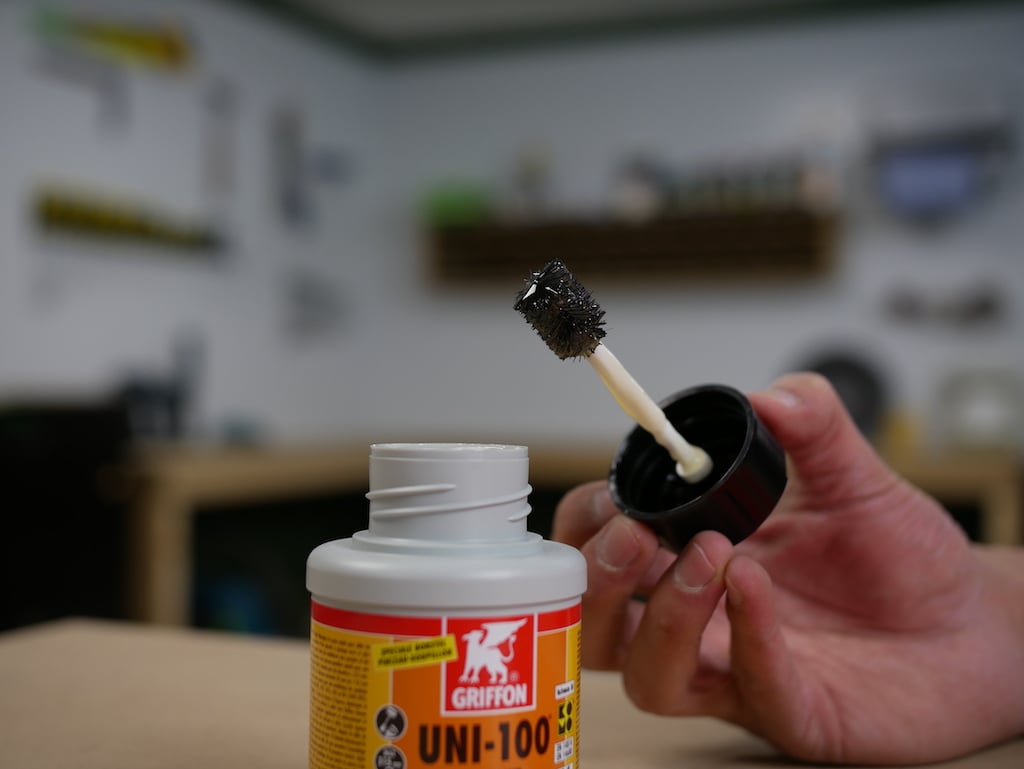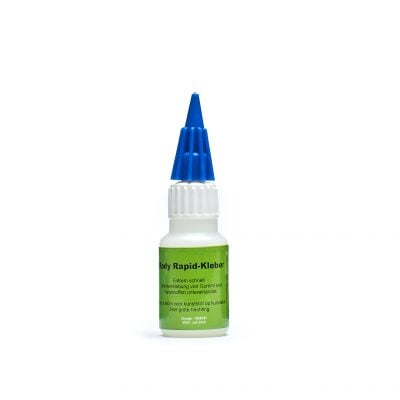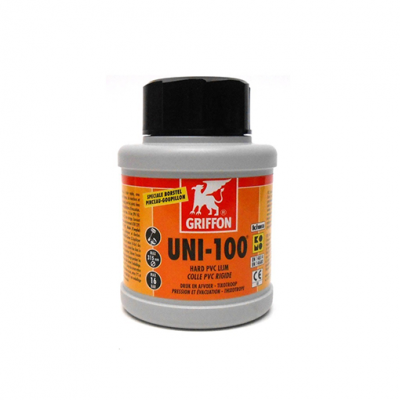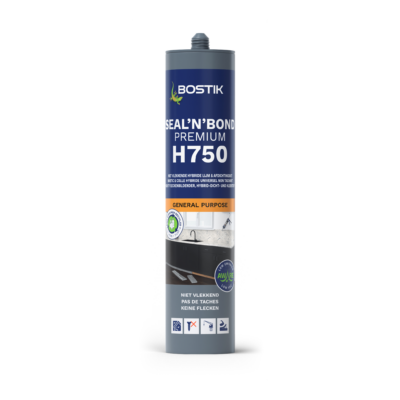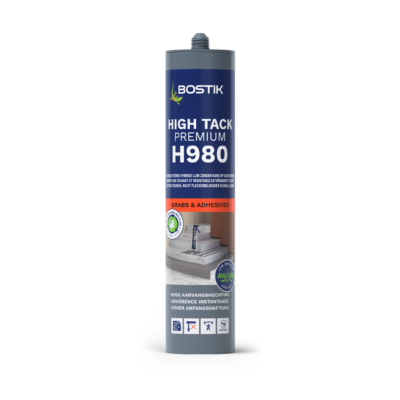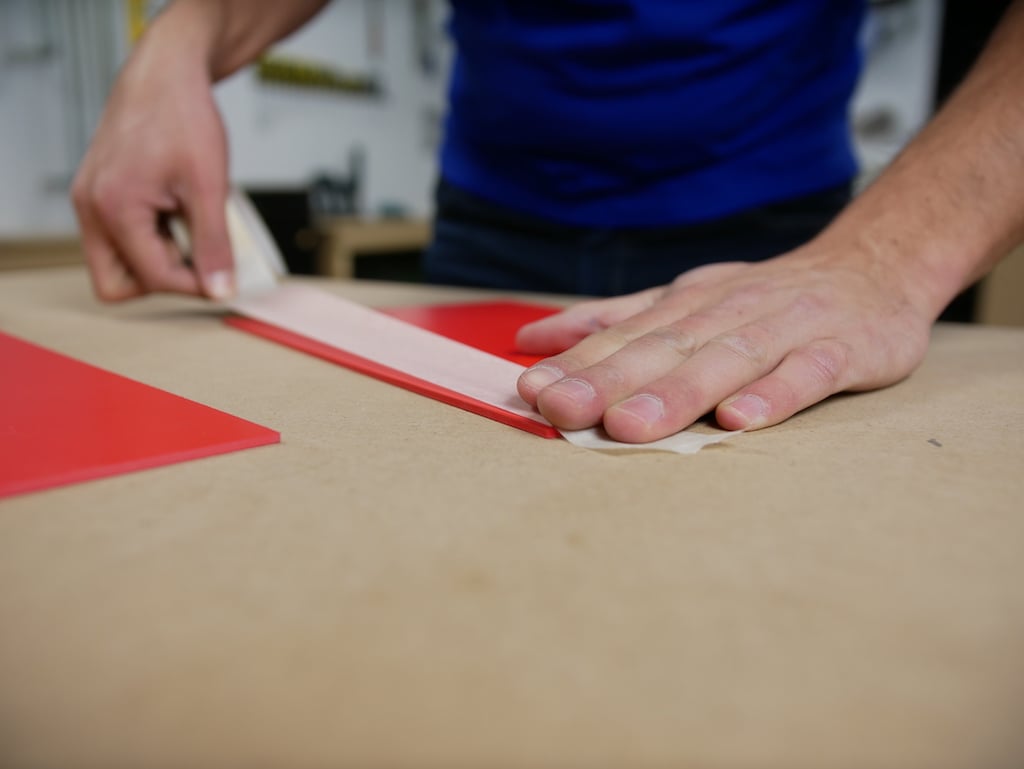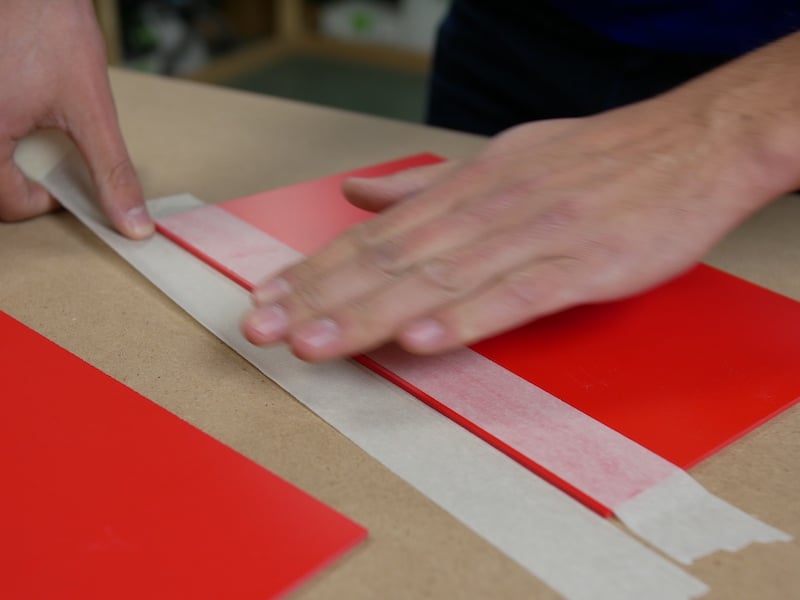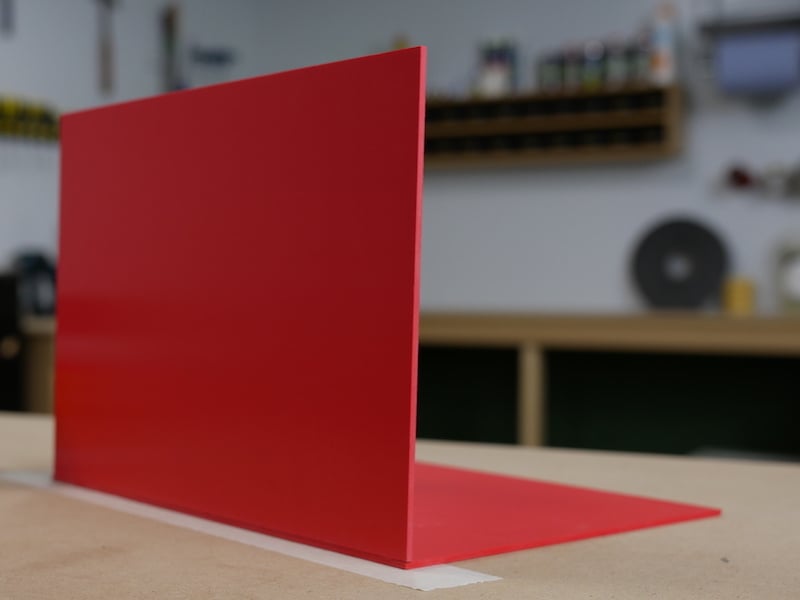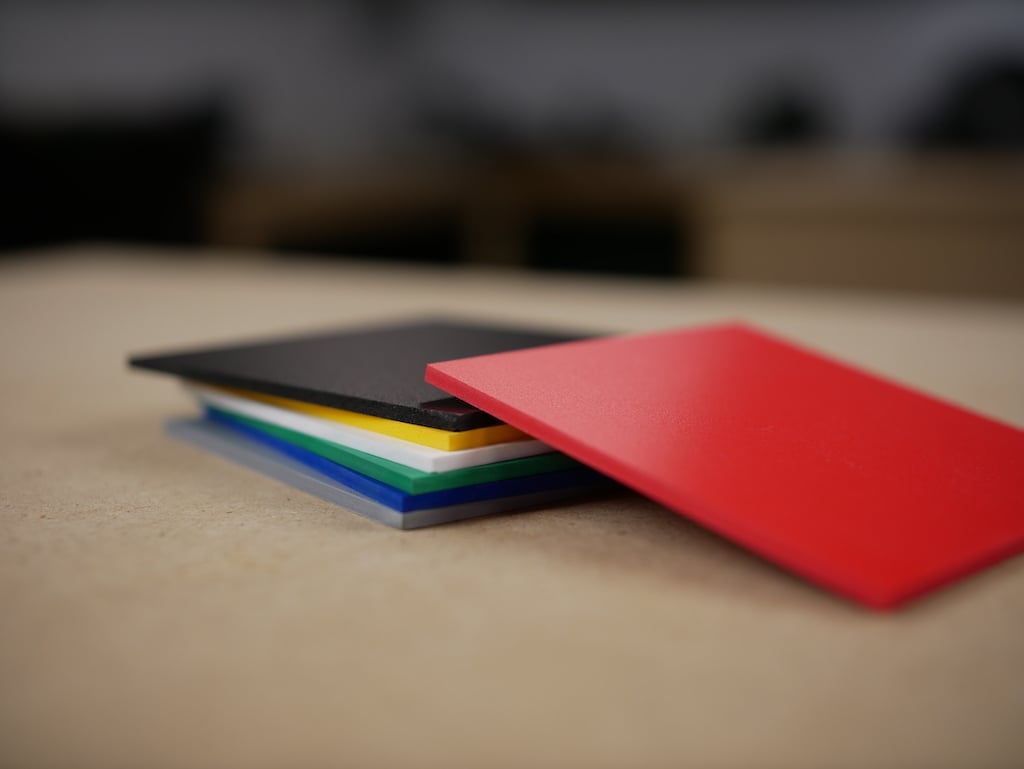PVC sheets are easy to glue or bond, both to other PVC panels and to other types of materials. In this blog post, we’re going to answer some of the questions our customers most often ask us, such as how to glue foamed PVC and hard PVC. Each material needs a different approach – but what they have in common is that the surface of the PVC must be completely clean and grease-free.
1. How do you glue hard PVC?
It’s quick and easy to glue sheets of hard PVC together using special PVC adhesive. You’ll find Uni 100 PVC adhesive in our webshop. This type of adhesive dissolves when exposed to light and air and the PVC sheets fuse. For this reason, this method of glueing is also known as cold welding.
Before you start …
Always wear protective rubber gloves when using PVC adhesives. You should also make sure that your workspace is well ventilated as the fumes from PVC glue can be very harmful to health.
First, make sure the surfaces you’re going to bond are clean and free of grease, using a degreasing agent and a lint-free cloth. Next, lightly sand the sheets with fine grain (150 grit) sandpaper. Using the brush provided in the cap of the bottle, apply the PVC adhesive, replacing the cap immediately. Position the two pieces you want to attach on top of one another and hold them in position with tape, pliers or glue clamps. Wipe away any excess adhesive using a paper towel. Allow the adhesive bond to dry for 10 minutes before putting it under any mechanical stress.
2. How long does it take for PVC adhesive to cure?
The length of time it takes for hard PVC adhesive to dry or cure varies depending on the measurements of the areas being glued, the type of substrate and the amount of glue used. The ambient temperature and the atmospheric humidity will also affect the drying time. As a rough guide, allow a period of 4 – 8 hours for an area with a diameter of up to 63mm.
3. What are the components of PVC panel adhesive?
PVC glue is based on vinyl chloride polymers with added solvents and fillers (cyclohexanone, tetrahydrofuran and butanone). PVC adhesive is a solvent glue that causes the surface of the PVC sheets to dissolve. As a result, both surfaces fuse and “melt” together to create a strong bond.
Most adhesives suitable for hard PVC are supplied in a container with a handy brush attached to the lid, so it’s quick and easy to apply the glue to the PVC material that you want to bond. The hard PVC glue that you’ll find in our webshop is a transparent, gap-filling adhesive so it will fill in any cracks and bumps.
4. What adhesive do you use to glue PVC to wood and other materials?
If you’re going to glue hard PVC to other materials such as timber, engineered wood, plastic, metal, insulation board, plasterboard or ceramic, then you should not use an adhesive for hard PVC as it will not bond well. To create a strong bond, we recommend pre-treating the surfaces to be glued using Bostik Primer Prep M. Then glue the PVC sheet to other materials using Seal’n’bond Premium H750 adhesive. Place the parts you’re glueing directly on top of one another as soon as you have applied the glue.
5. How do you glue foamed PVC?
Foamed PVC features outer layers of cardboard (chromo board), which can be glued using a standard contact adhesive. We recommend Superglue Rody-Rapid, available in our webshop. This is a multipurpose superglue, suitable for all smooth and porous plastics. As above, the surface must be clean and grease-free before you start glueing. Then hold the glued pieces together with a clamp, pair of pliers, or tape until the glue has dried.
6. How do you glue PVC to concrete?
Foamed PVC: to bond foamed PVC to concrete or brick, we recommend using use Bostik High Tack adhesive.
Hard PVC: When glueing hard PVC to concrete, first pre-treat the sheet with Bostik Primer Prep M and then attach it with Bostik High Tack adhesive.
7. How do PVC adhesives work on wood?
Foamed PVC: If you’re planning to glue foamed PVC to timber, chipboard, plastic, metal, ceramic, plasterboard or insulation board, pre-treat the surfaces to be glued with Bostik Primer Prep K and then apply Seal’n’bond adhesive.
Hard PVC: To bond hard PVC effectively, we recommend that you first prep the adhesive surfaces using Bostik Primer Prep M and then apply Seal’n’bond adhesive.
Tip: When using adhesives, always read the package instructions carefully. If you’re not sure, ask an expert which adhesive is the most suitable. Also bear in mind factors such as the application, the mechanical load and the temperature range of the environment in which the adhesive is applied as these will affect the curing times.
8. How do you glue foamed PVC to other materials?
When glueing foamed PVC to other materials such as plastic, metal, plasterboard, ceramics, or insulation boards, it’s important to prime the adhesive surfaces with Bostik Primer Prep M. As long as you choose the right adhesive, it’s possible to glue foamed PVC to a wide range of materials. Our advice for glueing foamed PVC to the following materials:
Cardboard, textiles, paper and leather require a wet glue connection. This offers the advantage of being able to adjust the bond while it’s drying.
9. How do you remove PVC glue?
Remove any stains of PVC glue using acetone and a clean lint-free cloth.
More questions about glueing PVC
If you have any more questions about PVC glue UK or need advice about the right products and materials for your project, please telephone us on +44 (0) 122 39 76 701 or send us an email: info@plasticsheetsshop.co.uk, we’re always happy to help.

